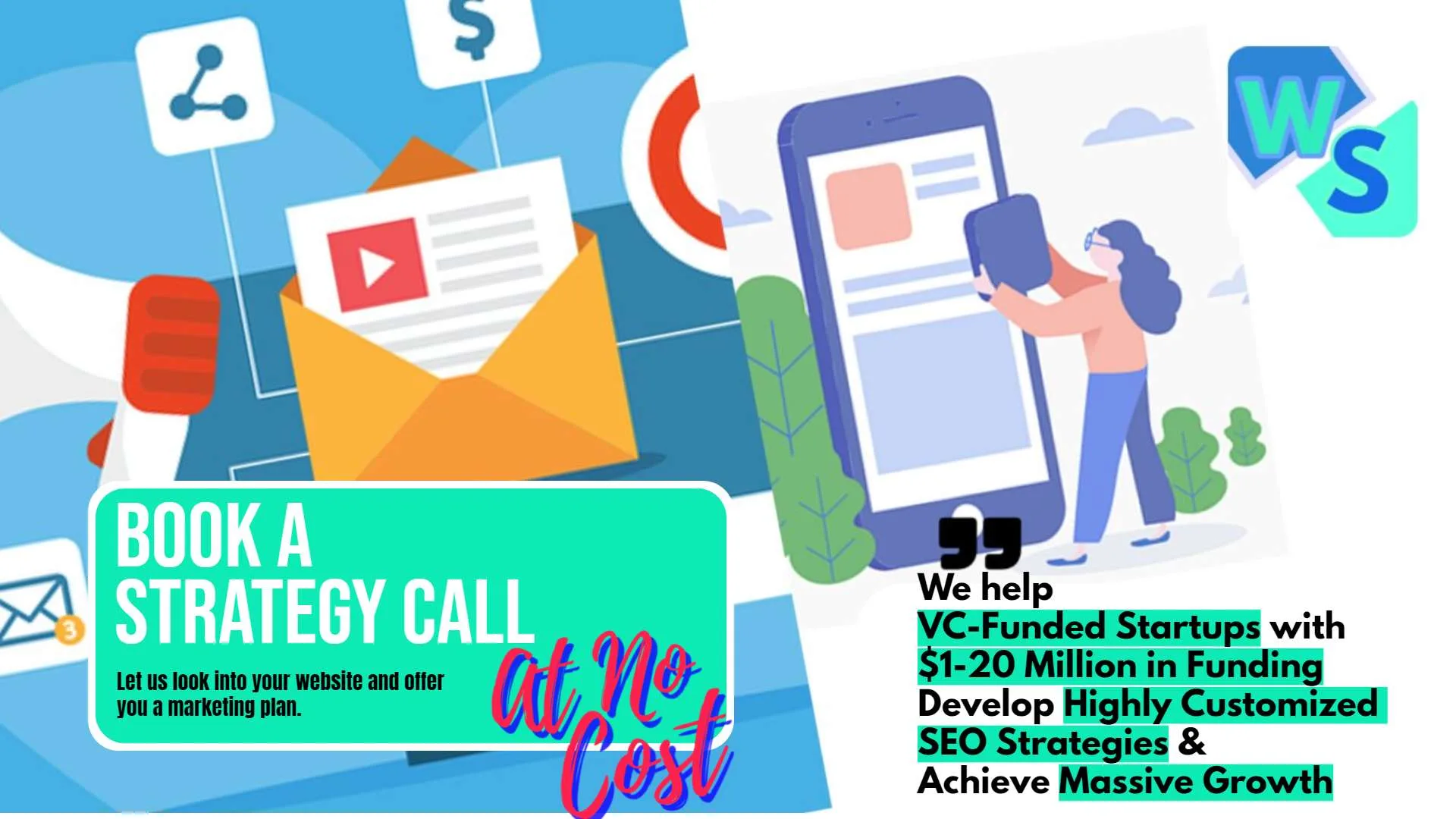Social media is a powerful tool for B2B companies to connect with their audience, showcase their expertise, and build relationships. However, creating engaging content that resonates with a B2B audience can be challenging. In this article, we’ll explore a variety of content ideas that will help your B2B company thrive on social media. These ideas are designed to be highly engaging, actionable, and easy to implement, ensuring your social media presence is both impactful and effective.
Showcase Industry Insights

Share Market Trends and Analysis
One of the best ways to position your company as a thought leader in your industry is by sharing insights on market trends and analysis. Regularly post about the latest developments in your field, including data, statistics, and your expert opinion. Create in-depth articles or short posts that discuss how these trends impact your industry and what businesses can do to adapt. By providing valuable information, you build credibility and attract an audience that looks to your company for expertise.
Conduct and Share Original Research
Conducting original research and sharing the findings can set your company apart as an industry leader. This could be in the form of surveys, case studies, or reports. Share key insights and data points on your social media channels, and provide links to the full reports on your website. Highlighting original research not only showcases your company’s knowledge but also provides valuable resources that your audience can use to make informed decisions.
Highlight Industry Challenges and Solutions
Discuss common challenges faced by businesses in your industry and offer practical solutions. Create content that addresses these pain points and demonstrates how your products or services can help overcome them. Use real-world examples and case studies to illustrate your points. This approach not only engages your audience but also positions your company as a problem solver and trusted advisor.
Share Customer Success Stories
Showcase Case Studies
Case studies are a powerful way to demonstrate the value of your products or services. Share detailed stories about how your solutions have helped clients achieve their goals. Highlight the challenges they faced, the solutions you provided, and the results they achieved. Use visuals such as graphs and charts to make the data more compelling. Sharing case studies on social media not only builds trust but also provides concrete evidence of your company’s capabilities.
Feature Customer Testimonials
Share testimonials from satisfied customers to build credibility and trust. These can be in the form of written quotes, video testimonials, or even short clips of customers talking about their positive experiences. Make sure the testimonials are genuine and reflect the high quality of your services. Featuring happy customers on your social media channels can attract new clients and reinforce the value of your offerings.
Host Customer Spotlights
Periodically spotlight your customers by sharing their stories and successes. Highlight how they have used your products or services to improve their operations or achieve significant milestones. This not only celebrates your customers but also demonstrates the real-world applications and benefits of your solutions. Customer spotlights can be shared as posts, videos, or even live interviews, adding variety to your content.
Provide Educational Content
Develop Comprehensive E-Books and Whitepapers
Create in-depth e-books and whitepapers that explore key topics within your industry. These comprehensive guides should provide valuable insights, research findings, and practical advice that your audience can apply to their business strategies.
Promote these resources on your social media channels by offering them as free downloads in exchange for contact information. This not only educates your audience but also helps you generate leads and build your email list.
Launch an Educational Video Series
Produce an educational video series that covers various aspects of your industry. Each episode can focus on a specific topic, such as market trends, best practices, or case studies. Share these videos on platforms like LinkedIn, YouTube, and Instagram.
Promote each episode in advance and encourage your audience to watch and share their feedback. Consistently publishing educational videos positions your company as a knowledgeable and reliable source of information.
Offer Interactive Online Courses
Create and promote interactive online courses that provide in-depth training on relevant topics. These courses can include video lectures, quizzes, assignments, and downloadable resources. Use your social media channels to promote the courses, share testimonials from past participants, and offer special discounts or early bird pricing. Interactive online courses not only educate your audience but also create an additional revenue stream for your business.
Host Expert Panels and Roundtables
Organize and host expert panels and roundtables on current industry topics. Invite thought leaders, industry experts, and key stakeholders to participate in these discussions. Stream these events live on your social media platforms and engage with your audience by allowing them to submit questions and comments. Sharing expert opinions and fostering discussion helps position your company as a central figure in industry conversations.
Share Research Summaries and Insights
Regularly share summaries of relevant industry research and insights. Break down complex reports into easily digestible posts that highlight key findings and implications. Use visuals such as graphs, charts, and infographics to make the information more accessible. Providing research summaries saves your audience time and effort, making your social media channels a go-to source for valuable information.
Create How-To Blog Posts
Write detailed how-to blog posts that address common challenges and questions in your industry. These posts should provide step-by-step instructions, tips, and best practices. Share these blog posts on your social media channels, and encourage your audience to read and apply the advice. How-to posts are highly valuable as they provide practical solutions that your audience can implement immediately.
Develop Industry-Specific Glossaries
Create and share industry-specific glossaries that define key terms and concepts. These glossaries can be valuable resources for newcomers and veterans alike, helping them understand the terminology used in your field. Promote the glossaries on your social media channels, and consider offering them as downloadable PDFs to build your email list. Glossaries establish your company as a helpful resource and support your audience’s ongoing education.
Offer Weekly Tips and Tricks
Share weekly tips and tricks related to your industry on your social media channels. These can be quick, actionable pieces of advice that your audience can easily implement. Use eye-catching graphics and concise captions to make these tips stand out. Consistently providing valuable tips helps keep your audience engaged and positions your company as a source of practical knowledge.
Create Interactive Quizzes and Assessments
Develop interactive quizzes and assessments that help your audience evaluate their knowledge or business practices. For example, you could create a quiz to assess readiness for digital transformation or an assessment to evaluate marketing strategy effectiveness. Share these interactive tools on your social media channels, and provide personalized feedback or recommendations based on the results. Interactive content is highly engaging and provides immediate value to your audience.
Publish Case Study Webinars
Host webinars that focus on in-depth case studies of successful projects or clients. These webinars should highlight the challenges faced, the solutions implemented, and the results achieved. Use real-world examples to illustrate best practices and innovative approaches. Promote the webinars on your social media channels and share recordings afterward. Case study webinars provide valuable learning experiences and demonstrate the effectiveness of your solutions.
Share Infographics with Key Takeaways
Create and share infographics that highlight key takeaways from longer pieces of content, such as e-books, webinars, or research reports. These infographics should summarize the most important points in a visually appealing format. Sharing infographics makes complex information more accessible and shareable, increasing the reach and impact of your educational content.
Conduct Live Demonstrations
Host live demonstrations of your products or services to educate your audience on their features and benefits. Use these live sessions to show real-world applications, provide tips on usage, and answer questions from viewers. Promote the demonstrations in advance to build anticipation and encourage participation. Live demonstrations offer a hands-on learning experience and help your audience better understand the value of your offerings.
Engage with Thought Leadership
Share Expert Interviews
Feature interviews with industry experts, thought leaders, or your own executives. These can be in the form of blog posts, videos, or podcasts. Discuss current trends, challenges, and predictions for the future. Sharing expert insights not only provides valuable information to your audience but also positions your company as a leader in the industry. Promote these interviews on your social media channels to attract engagement and build authority.
Publish Opinion Pieces
Write and share opinion pieces on trending topics within your industry. Offer your perspective on recent developments, future predictions, or controversial issues. Make sure your opinions are well-researched and backed by data or real-world examples. Opinion pieces can spark conversations and encourage your audience to engage with your content by sharing their own views and insights.
Participate in Industry Events and Conferences
Share your participation in industry events and conferences. Post updates from the events, including photos, videos, and key takeaways. If you’re presenting or speaking at an event, promote this on your social media channels and share highlights afterward. Engaging with industry events shows your active involvement in the community and keeps your audience informed about the latest developments.
Promote Your Products and Services
Develop Product Teaser Campaigns
Build anticipation for upcoming product launches with teaser campaigns. Start sharing sneak peeks and behind-the-scenes content weeks before the official launch. Use visually engaging posts and short videos to reveal small details about the product, keeping your audience intrigued and excited. Create a countdown to the launch date to build momentum. Teaser campaigns keep your audience engaged and eagerly awaiting the new release.
Host Product Demonstration Webinars
Conduct live product demonstration webinars to showcase the features and benefits of your products or services. Provide a detailed walkthrough, highlighting key functionalities and how they can solve your audience’s problems.
Allow participants to ask questions in real-time, making the session interactive and informative. Promote the webinars on your social media channels, and share the recordings for those who couldn’t attend live. Demonstration webinars offer a comprehensive understanding of your products and can drive conversion.
Share Customer Success Stories with Metrics
Highlight customer success stories that include quantifiable results. Share how your products or services have helped clients achieve specific outcomes, using data and metrics to illustrate the impact. For example, discuss how a client increased their efficiency by 30% or saved $50,000 annually after implementing your solution. Use visuals like charts and graphs to make the data more compelling. Sharing success stories with concrete metrics provides strong evidence of your product’s value.
Create Comparison Posts
Develop content that compares your products or services with those of competitors. Highlight the unique features and advantages of your offerings, and explain why they are the better choice. Ensure that your comparisons are honest and fact-based, providing a fair assessment. Use infographics and charts to present the information clearly. Comparison posts help potential customers understand the distinct benefits of your products, aiding their decision-making process.
Offer Limited-Time Trials and Demos
Promote limited-time trials or demos of your products and services to give potential customers a firsthand experience. Use social media to announce these offers, highlighting the benefits and the urgency of the limited-time nature. Encourage users to sign up quickly and provide feedback after their trial or demo. Offering trials and demos reduces the risk for potential customers and can lead to higher conversion rates.
Highlight Use Cases and Applications
Share posts that highlight different use cases and applications of your products or services. Explain how your offerings can be used in various industries or for specific purposes. Provide detailed examples and real-life scenarios to illustrate these applications. Use case posts help potential customers visualize how your products can meet their specific needs and challenges.
Create Customer Onboarding Content
Develop and share content that helps new customers get started with your products or services. This can include onboarding videos, step-by-step guides, and FAQ posts. Promote these resources on your social media channels to ensure new customers have easy access to the information they need. Effective onboarding content improves customer satisfaction and retention by ensuring they can use your products successfully from the start.
Showcase Product Updates and Improvements
Regularly update your audience on new features, improvements, and updates to your products or services. Share detailed posts and videos that explain the enhancements and how they benefit users. Highlighting ongoing improvements shows your commitment to innovation and customer satisfaction. It also keeps your existing customers informed and engaged with your brand.
Partner with Influencers for Product Reviews
Collaborate with industry influencers to review your products or services. Choose influencers who have a strong following and credibility within your target market. Provide them with access to your products and encourage them to share their honest reviews on their social media channels. Influencer reviews add authenticity and can significantly influence potential customers’ purchasing decisions.

Utilize User-Generated Content
Encourage your customers to share their experiences and successes with your products on social media. Create a branded hashtag and promote it widely, inviting users to tag their posts. Feature the best user-generated content on your own social media channels, giving credit to the original creators. User-generated content not only provides social proof but also builds a community of loyal customers who advocate for your brand.
Create Engaging Product Tutorials
Produce engaging and detailed product tutorials that demonstrate how to use your products effectively. These can be in the form of blog posts, videos, or infographics. Break down complex processes into simple, easy-to-follow steps and use visuals to enhance understanding. Sharing tutorials helps potential and existing customers get the most out of your products, increasing satisfaction and retention.
Highlight Special Offers and Discounts
Promote special offers, discounts, and exclusive deals on your social media channels. Create eye-catching graphics and clear calls-to-action to encourage your audience to take advantage of these deals. Highlighting limited-time offers can drive urgency and boost sales, especially when promoted through social media campaigns.
Share Behind-the-Scenes Content
Provide a glimpse behind the scenes of your product development and operations. Share stories about the people who create your products, the process of bringing a product to market, and the challenges and successes along the way. Behind-the-scenes content humanizes your brand and builds a deeper connection with your audience by showing the dedication and effort that goes into your products.
Conduct Customer Feedback Campaigns
Actively seek and share customer feedback on your products and services. Conduct surveys, polls, and direct requests for reviews. Share the positive feedback on your social media channels and highlight how you are addressing any negative feedback. Showing that you value and act on customer input builds trust and demonstrates your commitment to continuous improvement.
Engage with Your Audience
Create a Dedicated Community Group
Establish a dedicated community group on platforms like LinkedIn or Facebook where your audience can connect, share ideas, and discuss industry-related topics. Promote the group on your social media channels and encourage your followers to join.
Within the group, facilitate discussions, share exclusive content, and provide a platform for members to network and collaborate. This not only fosters a sense of community but also positions your brand as a central hub for industry knowledge and connections.
Host Live Q&A Sessions
Host regular live Q&A sessions on platforms like LinkedIn Live, Facebook Live, or Instagram Live. Announce these sessions in advance and invite your audience to submit their questions beforehand. During the live session, address these questions and engage with participants in real-time.
This interactive approach allows you to connect directly with your audience, provide valuable insights, and address their concerns. It also demonstrates your commitment to being accessible and responsive.
Conduct Interactive Webinars
Organize interactive webinars on topics that are relevant to your audience. Use these webinars to provide in-depth knowledge, demonstrate your products or services, and engage with participants through Q&A sessions and live polls.
Promote the webinars on your social media channels and encourage your audience to register. After the webinar, share key takeaways, recordings, and additional resources on your social media to extend the value of the content and keep the conversation going.
Implement User-Generated Content Campaigns
Encourage your audience to create and share content related to your brand or industry. Launch a user-generated content campaign where you invite your followers to share their success stories, tips, or experiences using a specific hashtag.
Feature the best submissions on your social media channels, giving credit to the original creators. This not only provides fresh content but also builds a sense of community and trust as your audience sees real people benefiting from your products or services.
Use Interactive Stories and Features
Leverage the interactive features available on platforms like Instagram Stories, LinkedIn Stories, and Facebook Stories. Use polls, quizzes, and question stickers to engage your audience and gather feedback. For example, you can create a quiz about industry trends, a poll on what topics they want to learn more about, or a question sticker asking for their biggest business challenges. These interactive elements make your content more engaging and provide valuable insights into your audience’s preferences and needs.
Celebrate Milestones and Achievements
Share posts that celebrate your company’s milestones, achievements, and anniversaries. Acknowledge significant milestones such as reaching a certain number of followers, launching a new product, or celebrating your company’s anniversary.
Invite your audience to join in the celebration by sharing their favorite memories or experiences with your brand. This not only builds a sense of community but also shows your appreciation for your audience’s support.
Conduct Regular Feedback Sessions
Actively seek feedback from your audience on your products, services, and content. Conduct regular feedback sessions through surveys, polls, or direct messages. Share the feedback you receive and explain how you plan to use it to improve your offerings. This transparency shows that you value your audience’s opinions and are committed to continuously improving. It also encourages more engagement as your audience sees their feedback being taken seriously.
Host Virtual Networking Events
Organize virtual networking events where your audience can connect with each other and with your team. Use platforms like Zoom or Microsoft Teams to host these events and promote them on your social media channels. Facilitate introductions, discussion topics, and breakout sessions to ensure active participation. Virtual networking events provide value by helping your audience expand their professional networks and gain insights from their peers.
Share Personal Stories and Behind-the-Scenes Content
Humanize your brand by sharing personal stories and behind-the-scenes content. Highlight the people behind your company, their roles, and their contributions. Share stories about your company’s culture, values, and everyday operations. This type of content builds a stronger emotional connection with your audience and makes your brand more relatable and trustworthy.
Engage with Social Media Challenges
Participate in trending social media challenges that are relevant to your industry. These challenges can be a fun and creative way to engage with your audience and showcase your brand’s personality. Encourage your followers to participate and share their entries using a specific hashtag. Highlight the best submissions on your social media channels to foster a sense of community and involvement.
Provide Exclusive Access to Content and Events
Offer your social media followers exclusive access to content and events. This could include early access to new product launches, special webinars, or VIP passes to industry events. Promote these exclusives as a reward for being a loyal follower and encourage others to join your social media channels to gain similar benefits. Providing exclusive access creates a sense of value and loyalty among your audience.
Leverage Visual Content

Post High-Quality Photos
Share high-quality photos that showcase your products, team, and events. Use professional photography to highlight the details and features of your products. Behind-the-scenes photos of your team and workplace can humanize your brand and make it more relatable. High-quality visuals are essential for capturing attention and making a strong impression on social media.
Create Engaging Videos
Videos are highly engaging and can be used to showcase various aspects of your business. Create short videos that demonstrate your products, share customer testimonials, or provide expert tips. Use longer videos for in-depth tutorials, webinars, or interviews. Share these videos on platforms like LinkedIn, YouTube, and Instagram to reach a broader audience. Engaging videos can significantly increase your reach and engagement on social media.
Develop Animated Content
Animated content, such as explainer videos and infographics, can simplify complex topics and make them more engaging. Use animations to explain how your products work, highlight key features, or share industry insights. Animated content is highly shareable and can help your audience better understand your offerings.
Conclusion
Creating engaging B2B social media content is essential for building strong relationships, showcasing your expertise, and driving business growth. By implementing the strategies outlined in this article, you can effectively connect with your audience, provide valuable insights, and highlight the unique benefits of your products and services.
From sharing industry insights and customer success stories to offering educational content and engaging directly with your audience, each approach provides a unique way to enhance your social media presence. Promoting your products and services through creative campaigns, interactive demonstrations, and user-generated content further solidifies your brand’s credibility and appeal.
Read Next:
- Creating SEO-Friendly Content for B2C Audiences
- Content Strategy for B2C SEO
- SEO Strategies for B2C E-Commerce Websites
- Leveraging Core Web Vitals for B2C SEO
- Schema Markup and Structured Data for Product Pages






















Comments are closed.